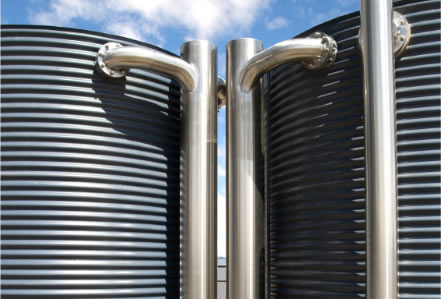
Advanced design and technology plus 25 years of geotechnical expertise have produced the dataTaker DT85GW GeoLogger – A versatile, powerful – yet low power & cost effective data logger.
It support vibrating wire and other geotechnical sensors such as Slope Indicator, RST Instruments, Geokon, Soil Instruments, Roctest, AGI – Applied Geomechanics Inc. DT85GW is also capable to test sensor integrity through audible frequency with temperature compensation (thermistor), 16 analog channels are capable to read up to 16 vibrating wire sensors. If temperature compensation is not required this logger can read up to 48 vibrating wire sensors.
Further expansion up to 320 sensors (with temperature compensation) or 960 sensors(without temperature compensation) is possible.
With wireless access, no need to have physical connection to the logger. Send the program, view and download the data or even modify your setting on nearby PC or Tablet wirelessly either as a Master (Access Point mode) or Slave (Client).
On Client mode dataTaker can have access to local router and if the router has internet access it can utilise the DT85GW’s automatic data delivery features to schedule your data to be automatically emailed to your inbox every day, week, month or other time interval.
More sophisticated systems can make use of the automatic data delivery features to send logged data to an FTP server.
With the standard unit able to store up to 10 million data points (expandable) you can log as much or as little as you need. Overwrite or stop logging once allocated memory is full, archive data on alarm event, copy to USB memory or transfer via FTP/ Email, the choice is yours.
Communications features include RS232, USB and Ethernet, connect to the DT85GW locally, remotely through a modem or over the Internet. The web interface allows users to configure the DT85GW, access logged data and see current measurements as mimics or in a list using a web browser.
FTP/ Email provides data to your office over the internet or wireless network, without the need for polling or specific host software
| Max Sampling rate (Hz) | 40 |
| Analog Inputs | 48 (2-wire common reference) 32 (2-wire isolated) 16 (3 and 4-wire isolated) |
| Analog Input Range | Voltage: ±30m,300m,3000m,50000mVDC Current: ±30mA Resistance: 1MΩ Frequency: 450kHz |
| Analog Voltage Accuracy | ±0.15 of Reading + (Full Scale Reading * 0.01%) |
| Effective Resolution | 18 bits |
| Analog Outputs | 1 |
| Analog Out Range | Voltage: 10m-10000mVDC Current: 0-24mA |
| Excitation | Analog Channel: selectable 2µA, 250µA or 2.5mA precision current source, 4.5V voltage source or switched external supply Switchable 12V/5 regulated power output (max 300mA) |
| Digital IO | 8 bi-directional channels |
| Counter | Low speed counters: 8 counters shared with digital inputs Dedicated counters: 4 high speed or 2 phase encoder |
| RS232/RS422/RS485 serial sensor port | 1 |
| RS232 host port | 1 |
| USB Port | 1 |
| Ethernet Port | 1 |
| Data Storage | 128MB (upgradeable to 2GB) |
| Vibrating Wire supported | Yes |
| Protocols Supported | Modbus, FTP, HTTP, XML, SMTP, NTP and SDI-12 |
| CEM20 Expansion Module supported | Yes |
| Power Requirements | 10-30 VDC |
| Internal Battery | 6Vdc 1.2Ah Lead Acid |
| Real Time Clock Accuracy | ± 1 min/year (0°C to 40°C) ± 4 min/year (–40°C to 70°C) |
| Integrated WIFI | Mode: Client or Access Point Security: OPEN, PSK_WEP, PSK_WPA, PSK_WPA2 |
| Integrated Cellular Modem | Interfaces: EDGE, GPRS, GSM, WCDMA, HSUPA, HSDPA EDGE/GPRS/GSM Freq: 850/900/1800/1900 MHz WCDMA/HSUPA/HSDPA Freq: 850/1900/2100 MHz |
| Dimensions(mm) | 180x137x65 |
| Weight | 1.5kg |
| Temperature Range | –45°C to 70°C |
| Warranty | 3 years |

Our client – a major research organization – had a project where they were to compare the effects of various surfacing materials on a series of tanks and how efficient these surfaces were in reducing temperature losses. The temperature in the tanks was to be cycled up to 60°C by internal steam coils and allowed to cool. The temperatures were to be logged at all times with sensors at various depths within the tanks. Data collection needed to be simple, but remote communications were unnecessary…
Read More
In the surrounds of the city of Guangzhou, a spell of cold weather poetically named the cold winds, threaten to slash the yields from the second rice crop of the season by 50%. These conditions frequently occur within the months of September and October. Rice breeders at the Guangdong Academy of Agricultural Science aim to develop new rice varieties that can withstand and thrive in the cold dew winds. Apart from records of average daily temperature, they lacked precise information on the severity of the conditions which the new varieties have to endure. The lack of data severely hampers the development of the new rice varieties. A monitoring solution was therefore required to further this research…
Read More
